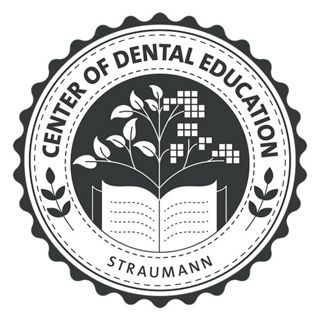Initial situation
A 38-year-old female patient presented to the dental office reporting discomfort when smiling, due to the absence of both upper second premolars (Figs. 1-3).
Clinical examination revealed tooth #16 with an intraradicular post and preparation for a crown, which was missing. In the adjacent quadrant, a cavity was noted on the distal surface of tooth #14. Overall, the patient exhibited healthy periodontal conditions. She is a non-smoker and does not present with any comorbidities or systemic health issues. CBCT imaging showed no signs of acute infection, and adequate bone quality and quantity at both sites. Additionally, a residual root was identified at site #15 beneath the already healed gingiva.
Treatment planning
The patient’s upper and lower arches were scanned using the Straumann® SIRIOS™ system. The scans, along with the DICOM files from the CBCT, were sent to Straumann® AXS™ – Smile in a Box® for treatment planning, surgical guide design, and 3D printing of the model and surgical guides (Figs. 4-6).
Following the evaluation and validation of the plan, it was decided for site #15 — where a residual root was present and the bone density was generally soft — that a Straumann® BLX Roxolid® SLActive® (RB) Ø 4.5 mm x 8 mm implant would be placed, along with an RB/WB M Anatomic Healing Abutment GH 1.5. For site #25, extraction of the remaining root was planned, followed by the placement of a Straumann® BLC Roxolid® SLActive® (RB) Ø 3.7 mm x 8 mm implant. This narrower site, with visible lamina dura, was favorable for achieving primary stability. An RB/WB M Anatomic Healing Abutment GH 1.5 was also selected for this site to support proper soft tissue emergence during the 60–90 day healing period. Due to the expected post-extraction gaps between the implants and buccal bone walls, cerabone® plus was planned to be used for gap grafting.
After the healing and gingival maturation phases, the patient will return for intraoral scanning directly on the Anatomic Healing Abutments, eliminating the need for abutment removal thanks to their scannable head design. Final restorations are planned as full-contour monolithic zirconia crowns cemented onto Straumann® Variobase® abutments.
Surgical procedure
Under local anesthesia administered bilaterally, the surgical procedure began at site #15 with a supracrestal incision and a full-thickness mucoperiosteal flap to ensure full visibility of the area for locating and extracting the residual root previously identified on the CBCT. The root fragment was located and extracted without complications.
At site #25, a minimally traumatic, flapless extraction was performed using a periotome, followed by the use of forceps to gently remove the root.
The surgical guide for guided surgery was inserted and verified for accurate fit. Osteotomy preparation was carried out according to the protocol generated by coDiagnostiX®, tailored to accommodate the planned implant types on each side. At site #15, a Straumann® BLX Roxolid® SLActive® (RB) Ø 4.5 mm x 8 mm implant was placed, achieving primary stability at 30 Ncm. At site #25, a Straumann® BLC Roxolid® SLActive® (RB) Ø 3.7 mm x 8 mm implant was inserted, reaching a primary stability of 50 Ncm.
Cerabone® plus was hydrated according to the manufacturer’s instructions and placed into the buccal gap at site #25 to preserve the ridge contour over time (Fig. 10). Both sites received RB/WB M Anatomic Healing Abutments GH 1.5 and were sutured using mesial and distal single interrupted sutures to ensure soft tissue stability during the healing phase (Figs. 7-9, 11-12).
The patient received postoperative instructions along with an analgesic prescription and was scheduled for suture removal after two weeks.

A Center of Dental Education (CoDE) is part of a group of independent dental centers all over the world that offer excellence in oral healthcare by providing the most advanced treatment procedures based on the best available literature and the latest technology. CoDEs are where science meets practice in a real-world clinical environment.
Prosthetic procedure
After 60 days, the patient returned to the clinic for intraoral scanning to initiate the final crown workflow. A noteworthy advantage of the Anatomic Healing Abutment is that it allows direct scanning without removal, eliminating the need for a scanbody. This significantly minimizes soft tissue disturbance, enhances patient comfort, and reduces overall chair time.
Intraoral scanning was performed using the Straumann® SIRIOS™ system (Fig. 13), and the files were exported to CARES® for final crown design (Fig. 14). The virtual subgingival contour provided by the Anatomic Healing Abutment in the software can be easily replicated in the final restoration, offering a substantial prosthetic benefit.
Two monolithic zirconia crowns were milled and cemented onto Straumann® Variobase® abutments with the same gingival height as the Anatomic Healing Abutments. The crowns were tested on a 3D-printed model to evaluate occlusion and excursive movements (Fig. 15). Additionally, site #16 received a temporary 3/4 onlay restoration.
Once the final crowns were ready, the Anatomic Healing Abutments were removed, revealing a natural gingival contour — ideal for receiving the definitive restorations without discomfort or disruption to the peri-implant tissues (Figs. 16,17).
Both crowns were seated, and the retention screws were torqued to 35 Ncm, as recommended for Straumann final abutments. The screw channels were protected with PTFE tape and sealed with flowable composite. Occlusion and excursive movements were carefully checked, and the patient received comprehensive hygiene instructions (Fig. 18).
Treatment outcomes
The treatment outcome exceeded the patient’s expectations, as the total treatment time was only 65 days and she reported experiencing no discomfort throughout the process. At the 1-year follow-up appointment, new photographs and radiographs were taken, revealing healthy and stable soft and hard tissues (Fig. 19)
Author’s testimonial
“The Straumann® Fast Molar solution with the Anatomic Healing Abutment offers a streamlined approach to achieving a natural emergence profile from the day of surgery, optimizing healing time and accelerating the transition to the restorative phase. The scannable head is a key feature, allowing for direct digital impressions without removing the component or requiring an additional scanbody. In short, the Anatomic Healing Abutment delivers a more comfortable and esthetically pleasing experience for patients, while offering clinicians a time-efficient and predictable solution.”

